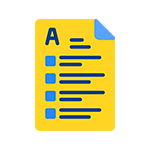The best type of learning happens by intellectually indulging the students. There are multiple ways to engage them, such as being inquisitive or asking questions in the classroom. This is an excellent approach to stimulate their senses and promote critical thinking. One of the biggest reasons students nowadays highly rely on online assignment help services is unclear concepts, and lack of knowledge.
The active participation of students in the classroom enhances their ideation and logical process. This strategy prepares them for future assignments and exam time. But, how do you spark an interesting discussion in the classroom setup?
Let us discuss some important methods that will facilitate the teaching process. But, before that, we will help you understand why it is important to ask questions in the classroom.
Table of Contents
Advantages of Asking Questions In The Classroom
1. Displays Interest:
A question is a good way to instantly capture the listeners’ attention. It ensures that all the students are hearing the lecture attentively. It instantly reveals their interest in the subject.
2. Understanding Of The Subject:
Questions show that students are not agreeing to just anything, and really grasping the essence of a topic. Further, it helps in clarifying the misunderstandings.
Also, there is scope to elaborate on the matter more deeply. Hence, allowing the teachers to help students understand a concept better.
3. Engagement:
Raising questions while teaching helps in improving engagement in the class. Teaching takes the shape of a discussion, allowing a more interactive session. This ensures students are personally involved. If the concepts remain unclear, assignment help professionals could also guide in the subjects.
4. In-Depth Knowledge:
It is important to strengthen the foundations to understand a topic better. Therefore, being inquisitive in the classroom helps in simplifying complex concepts. Consequently, better opportunities for learning to the students.
Important Strategies For Asking Questions: Classroom Learning
1. Assess The Objectives:
While preparing questions it is crucial to identify the aim. Generally, teachers want their students to profess the core concepts. Moreover, developing critical thinking skills in young minds could be your concern.
Your questions should involve them in practicing these skills. Furthermore, it must push them to convey their ideas and facts. Overall, it should facilitate the entire skill development and learning experience.
2. Be Direct:
It is helpful to organize your questions strategically. Then, move with the subject’s pace. This is a better approach rather than shooting multiple complex questions at once. Assignments are a powerful way to test their knowledge later on. Students who struggle with writing their projects can take guidance from assignment help specialists available online.
Preparing questions sequentially helps in building up the background and maintains students’ interest throughout the session.
3. One Question At A Time:
Avoid bombarding your class with multiple questions at once. This may lead to confusion as students would be unsure which question to answer. The best thing a teacher can do is prepare notes before the class and include questions strategically.
Move to another question only after you have discussed the previous one for long enough. The idea is to keep the overall classroom learning session interactive. Rather than saving the questions for the end, maintain their frequency throughout.
4. Open-Ended Questions:
The best way to achieve a highly interactive session with the class is by asking open-ended questions. There is a great scope for debate that engages every participant in the classroom.
Avoid asking simple yes/no questions. Instead, frame your questions in such a way that there is enough room for critical analysis and discussion. This is one of the strategies assignment help professionals also suggest.
5. Reflect Upon Your Strategy:
Once the classroom teaching session is over, it is always helpful to take a quick test. For instance, a surprise test or an assignment task helps in identifying the effects. You can prepare notes to reflect upon your method and refine them in the future.
Strengthen A Discussion In The Classroom
Here are some useful ways to facilitate an ongoing discussion in the classroom.
1. Allow A Timeframe:
It is always better to give students a few seconds after asking a question. It gives them some time to think and participate. You may try restating the question in easier language to spark their interest and motivate the rest of the class to volunteer in the question-answer session.
2. Do Not Interrupt:
A teacher should always let a student finish their answer instead of interjecting. This promotes a positive picture of questioning sessions in the students’ minds and encourages them to present their ideas.
Interrupting them in-between, even if they are heading in the wrong direction could be discouraging.
3. Seem Interested:
Showing positive gestures, like nodding, having affirmative body language and warm facial expressions motivates the speaker. Even assignment help masters believe it to be a fruitful strategy to communicate with the students and increase their involvement in the subjects.
Redirection: The quality of a good classroom discussion is, it directs a wrong conclusion towards a correct one. A student might have overlooked or misunderstood a critical point. Thus, a healthy discussion clarifies their doubts by welcoming the entire class to share their inputs.
Conclusion
While classroom teaching is the traditional way of learning, it does not guarantee every student’s participation. Therefore, employing effective strategies is vital to facilitate knowledge development among the students. The assignment help masters also go by this technique in their personal teaching sessions.
In this post, we have discussed the importance of classroom questioning sessions. Moreover, we talked about significant strategies to ensure an enriching experience.
 Santa Clara, CA 95050
Santa Clara, CA 95050 





